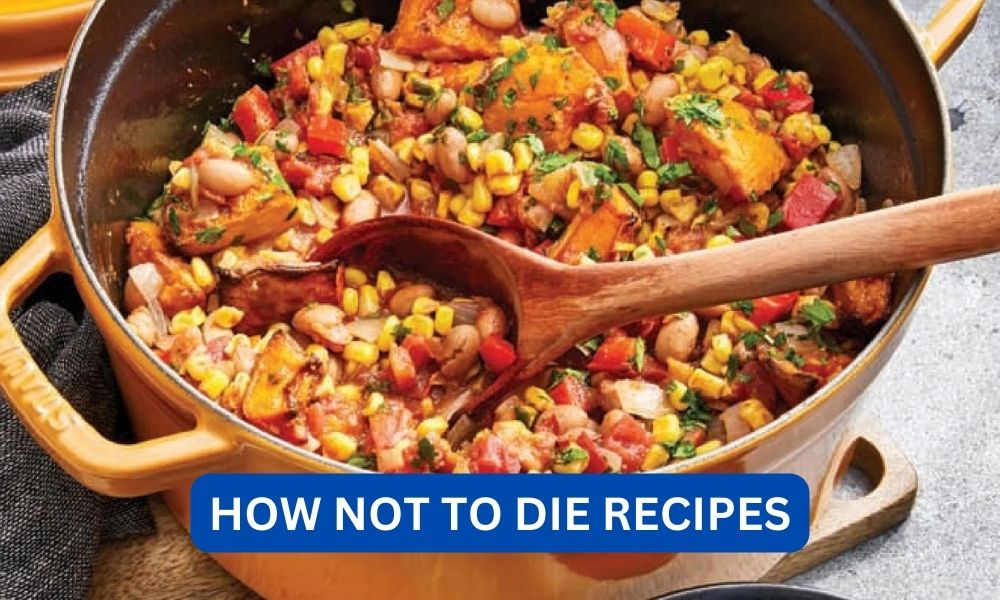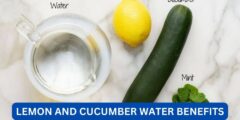The “How Not to Die” movement has gained significant traction in recent years, with more and more people turning to plant-based diets and lifestyle changes to prevent chronic diseases and live longer, healthier lives. This movement, popularized by Dr. Michael Greger’s book “How Not to Die,” focuses on evidence-based nutrition and lifestyle choices that can help individuals avoid the leading causes of death, such as heart disease, cancer, and diabetes.
One of the key components of the “How Not to Die” approach is incorporating nutrient-dense, whole plant foods into one’s diet. These foods are rich in vitamins, minerals, and antioxidants, which can help protect against chronic diseases and promote overall health and longevity. In this article, we will explore some delicious and nutritious “How Not to Die” recipes that can help you on your journey towards a healthier and longer life.
Contents
The Power of Plant-Based Eating
According to the World Health Organization, an estimated 60% of all deaths worldwide are caused by chronic diseases, with heart disease and stroke being the leading causes. These diseases are often preventable through lifestyle changes, including adopting a plant-based diet. Research has shown that plant-based diets can reduce the risk of chronic diseases and improve overall health in various ways.
Read:How do i balance too much vinegar in a recipe- Lowering blood pressure: A plant-based diet, rich in fruits, vegetables, and whole grains, has been shown to lower blood pressure, reducing the risk of heart disease and stroke.
- Reducing inflammation: Chronic inflammation is linked to various diseases, including heart disease, cancer, and diabetes. Plant-based foods, such as leafy greens, berries, and nuts, are rich in anti-inflammatory compounds that can help reduce inflammation in the body.
- Improving gut health: Plant-based diets are high in fiber, which is essential for a healthy gut microbiome. A diverse and healthy gut microbiome has been linked to a reduced risk of chronic diseases and improved overall health.
- Lowering cholesterol: Plant-based diets are naturally low in cholesterol and saturated fat, which can help lower cholesterol levels and reduce the risk of heart disease.
- Managing weight: Plant-based diets are typically lower in calories and higher in fiber, which can help with weight management and reduce the risk of obesity-related diseases.
These are just a few of the many benefits of a plant-based diet. By incorporating more plant-based foods into your diet, you can improve your health and reduce your risk of chronic diseases.
Read:Do they have recipes on masterchefDelicious and Nutritious “How Not to Die” Recipes
Now that we understand the benefits of a plant-based diet, let’s explore some delicious and nutritious “How Not to Die” recipes that you can incorporate into your daily meals.
1. Green Smoothie Bowl
Smoothie bowls have become increasingly popular in recent years, and for a good reason. They are a delicious and nutritious way to start your day, packed with vitamins, minerals, and antioxidants. This green smoothie bowl is not only delicious but also contains ingredients that can help prevent chronic diseases.
Ingredients:
- 1 cup of spinach
- 1 frozen banana
- 1/2 cup frozen mango
- 1/2 cup frozen pineapple
- 1/2 avocado
- 1/2 cup almond milk
- 1 tbsp chia seeds
- 1 tbsp flax seeds
- 1 tsp spirulina powder
- Toppings of your choice (e.g., fresh berries, sliced banana, shredded coconut, granola)
Instructions:
- Add all the ingredients (except for the toppings) into a blender and blend until smooth.
- Pour the smoothie into a bowl and add your desired toppings.
- Enjoy your delicious and nutrient-packed green smoothie bowl!
This smoothie bowl is rich in antioxidants, thanks to the spinach, mango, and pineapple. It also contains healthy fats from the avocado and omega-3 fatty acids from the chia and flax seeds. The spirulina powder adds an extra boost of nutrients, including protein, iron, and B vitamins.
Read:can taco soup recipe2. Lentil and Vegetable Curry
This hearty and flavorful curry is not only delicious but also packed with nutrients. Lentils are a great source of plant-based protein, fiber, and various vitamins and minerals. The vegetables in this curry add even more vitamins, minerals, and antioxidants, making it a perfect “How Not to Die” recipe.
Ingredients:
- 1 cup dried red lentils
- 1 onion, chopped
- 2 cloves of garlic, minced
- 1 tbsp curry powder
- 1 tsp cumin
- 1 tsp turmeric
- 1 can of diced tomatoes
- 1 cup of vegetable broth
- 1 cup of chopped vegetables (e.g., carrots, bell peppers, zucchini)
- Salt and pepper to taste
Instructions:
- In a large pot, sauté the onion and garlic until softened.
- Add the curry powder, cumin, and turmeric and cook for another minute.
- Add the lentils, diced tomatoes, and vegetable broth to the pot and bring to a boil.
- Reduce the heat and let the curry simmer for about 20 minutes, or until the lentils are cooked and the sauce has thickened.
- Add the chopped vegetables and cook for an additional 10 minutes.
- Season with salt and pepper to taste.
- Serve the lentil and vegetable curry over brown rice or quinoa for a complete and nutritious meal.
This curry is not only delicious but also a great source of plant-based protein, fiber, and various vitamins and minerals. The spices used in this recipe, such as turmeric and cumin, have anti-inflammatory properties, making this dish even more beneficial for your health.
3. Chickpea and Vegetable Stir-Fry
Stir-fries are a quick and easy way to incorporate more vegetables into your diet. This chickpea and vegetable stir-fry is not only delicious but also packed with nutrients and antioxidants.
Ingredients:
- 1 can of chickpeas, drained and rinsed
- 1 onion, chopped
- 2 cloves of garlic, minced
- 1 tbsp soy sauce
- 1 tbsp sesame oil
- 1 tsp ginger, grated
- 1 cup of chopped vegetables (e.g., broccoli, bell peppers, mushrooms)
- Salt and pepper to taste
Instructions:
- In a large pan, sauté the onion and garlic until softened.
- Add the chickpeas, soy sauce, sesame oil, and ginger to the pan and cook for a few minutes.
- Add the chopped vegetables and cook until they are tender.
- Season with salt and pepper to taste.
- Serve the chickpea and vegetable stir-fry over brown rice or quinoa for a complete and nutritious meal.
This stir-fry is a great source of plant-based protein, fiber, and various vitamins and minerals. The chickpeas also provide a good amount of iron, which is essential for maintaining healthy blood cells and preventing anemia.
Incorporating “How Not to Die” Recipes into Your Diet
Incorporating “How Not to Die” recipes into your diet doesn’t have to be overwhelming or restrictive. Start by making small changes, such as adding more fruits and vegetables to your meals or swapping out meat for plant-based protein sources a few times a week. Gradually increase the number of plant-based meals in your diet until it becomes a regular part of your eating habits.
It’s also essential to remember that a healthy diet is just one aspect of the “How Not to Die” approach. Regular exercise, stress management, and getting enough sleep are also crucial for preventing chronic diseases and promoting overall health and longevity.
Conclusion:
The “How Not to Die” movement has gained significant momentum in recent years, with more and more people turning to plant-based diets and lifestyle changes to prevent chronic diseases and live longer, healthier lives. By incorporating nutrient-dense, whole plant foods into your diet and making other lifestyle changes, you can improve your health and reduce your risk of chronic diseases.
In this article, we explored some delicious and nutritious “How Not to Die” recipes, including a green smoothie bowl, lentil and vegetable curry, and chickpea and vegetable stir-fry. These recipes are not only tasty but also packed with nutrients and antioxidants that can help prevent chronic diseases. Remember to start small and gradually incorporate more plant-based meals into your diet for long-term success.
So why not give these “How Not to Die” recipes a try and see how they can benefit your health and well-being? Your body will thank you for it in the long run.









